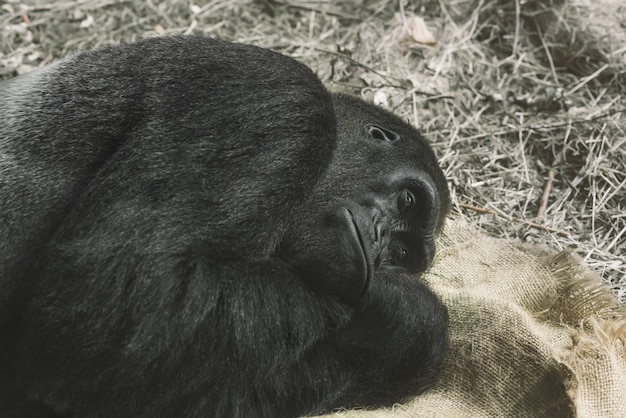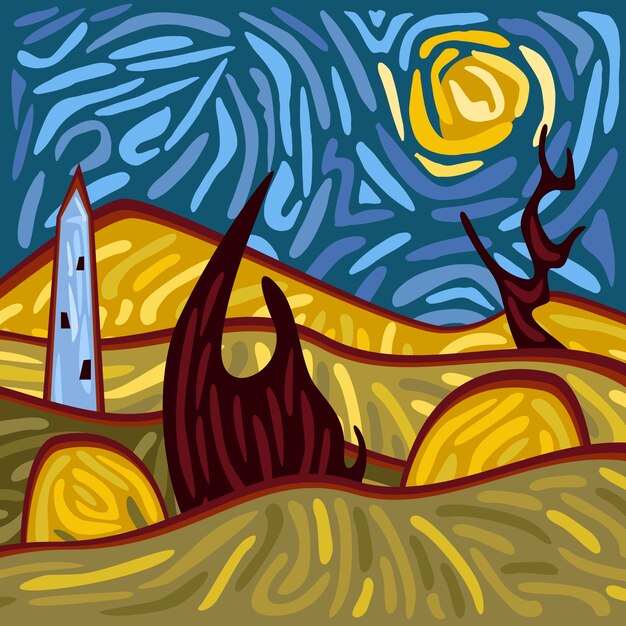Hurricane Facts for Kids
Did you know that hurricanes are formed over warm ocean waters?
Hurricanes are the most powerful storms on Earth!
Hurricane winds can reach speeds of over 100 miles per hour!
Hurricanes can last for up to two weeks!
The eye of a hurricane is the calmest part, with clear skies and no rain.
The word hurricane comes from the Taino Native American word, meaning evil spirit of the wind.
Hurricanes are given names to make it easier to track and remember them.
The strongest hurricanes are categorized as Category 5 storms.
Hurricanes can cause storm surges, which are walls of water that flood coastal areas.
Hurricane Katrina, in 2005, was one of the deadliest and costliest hurricanes in U.S. history.
Hurricanes can be so strong that they can knock down trees, buildings, and power lines.
Hurricanes can bring heavy rain that leads to flooding.
The Atlantic hurricane season runs from June 1st to November 30th.
Hurricanes are known by different names in different parts of the world – typhoons in the Pacific and cyclones in the Indian Ocean.
Hurricanes form in the warm tropics and move towards the cooler poles.
The eye wall of a hurricane is where the strongest winds and heaviest rainfall occur.
Hurricane hunters fly into hurricanes to collect important data and help predict their paths.
Heavy rainfall from hurricanes can cause rivers to overflow, leading to more flooding.
Storm surge is the biggest threat to coastal areas during a hurricane.
Some hurricanes are given names of people, animals, or even places.
Hurricanes need warm ocean waters, moisture, and light winds to form and strengthen.
Hurricanes can create tornadoes within them.
In the Pacific Ocean, hurricanes are less common, but they are called typhoons.
Hurricanes rotate counterclockwise in the Northern Hemisphere and clockwise in the Southern Hemisphere.
Hurricanes can cause massive power outages that can take days or weeks to restore.
The eye of a hurricane can range from a few miles to more than 50 miles in diameter.
Hurricane names are reused every six years, unless a storm is particularly devastating and its name is retired.
NOAA, the National Oceanic and Atmospheric Administration, monitors and forecasts hurricanes in the United States.
Hurricanes can knock down telephone poles, trees, and other objects due to their strong winds.
Hurricane Sandy, in 2012, caused significant damage and flooding in the northeastern United States.
Hurricanes are given names to avoid confusion when multiple storms are occurring at the same time.
The storm surge caused by hurricanes is the leading cause of hurricane-related deaths.
Hurricanes can bring hail, lightning, and intense thunderstorms.
Hurricanes can travel hundreds or even thousands of miles before dissipating.
Hurricanes can form in different parts of the world, including the Atlantic Ocean, Caribbean Sea, Gulf of Mexico, and Pacific Ocean.
The Saffir-Simpson Hurricane Wind Scale is used to rate the intensity of hurricanes, from Category 1 to Category
The eyewall of a hurricane is the most dangerous part, with the strongest winds and heaviest rain.
Hurricane Andrew, in 1992, was one of the costliest hurricanes to hit the United States.
The warm, moist air from the ocean fuels the growth and intensity of hurricanes.
Hurricanes can cause significant damage to agriculture and disrupt food supplies.
Strong hurricanes can create massive waves, making it dangerous for ships and boats at sea.
Climate change may be contributing to the increased frequency and intensity of hurricanes.
Hurricanes can form in both the northern and southern hemispheres.
The intensity of a hurricane is determined by the wind speed, which is measured in miles per hour.
It is important to have an emergency plan in place and to evacuate if instructed to do so during a hurricane.
Interesting Hanukkah Facts to Know
Hanukkah celebrates the victory of light over darkness.
Menorahs are lit during Hanukkah to remember the miracle of the oil.
The holiday lasts eight days and nights.
Hanukkah is also known as the Festival of Lights.
It is customary to exchange gifts during Hanukkah.
The holiday starts on the 25th of Kislev in the Hebrew calendar.
The menorah has nine branches, one for each night plus a helper candle.
Hanukkah commemorates the rededication of the Second Temple in Jerusalem.
The spinning top game called dreidel is popular during Hanukkah.
Traditional Hanukkah foods include latkes (potato pancakes) and sufganiyot (jelly-filled doughnuts).
Hanukkah is a joyous celebration of Jewish pride and heritage.
Every night, one additional candle is lit on the menorah.
Hanukkah playlists often include spirited music like I Have a Little Dreidel and Rock of Ages.
Families gather to celebrate and share in the Hanukkah festivities.
Dreidels have Hebrew letters on each side symbolizing a great miracle happened there.
The menorah is placed in a prominent place, often near a window, to spread the light.
It is common to play the dreidel game using chocolate coins as markers.
Hanukkah is a time to remember and honor Jewish resilience throughout history.
Hanukkah is celebrated by Jewish communities all over the world.
The spinning motion of the dreidel symbolizes the ever-changing nature of life.
Some families have a Hanukkah bush decorated with Jewish-themed ornaments.
Hanukkah candles are traditionally placed from right to left but lit from left to right.
The miracle of the oil lasted for eight days, hence the eight nights of Hanukkah.
Hanukkah is a time for gratitude and appreciation for the blessings in life.
Many Jewish schools and organizations hold special Hanukkah events and activities.
Hanukkah traditions vary among different Jewish communities.
The colors blue and white are often associated with Hanukkah.
Hanukkah desserts often feature nuts, like rugelach (pastry filled with nuts and fruits).
Lighting the menorah is a symbol of spreading hope and positivity.
Hanukkah is a chance for families to come together and create lasting memories.
The dreidel game is a way to teach children about charity and giving.
Hanukkah represents the importance of preserving Jewish culture and heritage.
The story of Hanukkah is about a small group of Jewish fighters who resisted oppression.
The Hanukkah story is found in the ancient Jewish text called the Talmud.
The oil that was found in the temple only enough for one day ended up lasting eight days.
Hanukkah is a time for reflection and recommitment to one’s faith.
Hanukkah is known for its delicious traditional foods enjoyed by all.
The menorah is a symbol of hope and unity.
Special blessings are recited while lighting the Hanukkah candles.
Hanukkah gelt is often given to children to celebrate the holiday.
Hanukkah celebrates the freedom to practice one’s religion without persecution.
The menorah’s central candle is called the shamash and is used to light the other candles.
Hanukkah songs often tell the story of the holiday and spread joy and warmth.
Hanukkah is a time for community gatherings and festive events.
The lighting of the menorah is a powerful reminder of the resilience and strength of the Jewish people throughout history. Hope these statements about Hanukkah facts inspire you!
Discovering Fascinating Facts about Neptune – Fun for Kids
Neptune is the eighth planet from the sun in our solar system.
It is named after the Roman god of the sea.
Neptune is a gas giant, made up mostly of gaseous hydrogen and helium.
The planet is bright blue in color, primarily because of the methane in its atmosphere.
Neptune has the strongest winds in the solar system, with speeds reaching up to 2,100 kilometers per hour.
It takes Neptune about 165 Earth years to complete one orbit around the sun.
The gravity on Neptune is 17% stronger than Earth’s gravity, which means you would weigh less there.
The Great Dark Spot on Neptune is similar to Jupiter’s Great Red Spot and is a huge storm that was once visible from Earth.
Neptune has 14 moons, the largest of which is Triton.
Triton is the coldest known object in our solar system, with temperatures as low as -235 degrees Celsius.
Triton is also unique because it orbits Neptune in the opposite direction to the planet’s rotation.
Neptune’s rings are made up of ice particles, dust, and small rocks.
The five main rings of Neptune are named Galle, Le Verrier, Lassell, Arago, and Adams.
Every 248 years, Pluto’s elliptical orbit brings it closer to the sun than Neptune, making Neptune the furthest planet from the sun during that time.
Neptune has a faint system of faint rings that are difficult to see from Earth.
The Voyager 2 spacecraft is the only spacecraft to have visited Neptune, passing by in 1989.
The planet can be seen with a telescope from Earth, but it appears as a small, blurry dot due to its distance.
Neptune’s atmosphere is mainly composed of hydrogen, helium, and methane, which gives it its blue color.
The blue color of Neptune’s atmosphere is so striking that it can sometimes be mistaken for a water planet.
Neptune has a thin layer of clouds made of methane above its atmosphere.
Neptune’s average temperature is about -200 degrees Celsius, making it one of the coldest planets in the solar system.
In the mythology of the ancient Romans, Neptune was the god of the sea and brother of Jupiter and Pluto.
Neptune’s diameter is about four times that of Earth.
The deep blue color of Neptune’s atmosphere is a result of the absorption of red light by methane gas.
Neptune has a stronger magnetic field than any other planet in the solar system.
If you could stand on Neptune, you would weigh less than 10% of what you weigh on Earth.
Unlike Earth days, a day on Neptune lasts only 16 hours and 6 minutes.
The winds on Neptune are so strong that they can create massive storms that last for several years.
If Neptune was hollow, it could fit nearly 60 Earths inside it.
The first recorded sighting of Neptune was in 1846 by German astronomer Johann Galle.
The Voyager 2 spacecraft discovered six new moons of Neptune during its flyby.
The distance from the sun to Neptune is about 2.7 billion miles, or 4.3 billion kilometers.
Neptune has a thick layer of clouds made up of ammonia and hydrogen sulfide.
The gravitational pull on Neptune is about 17 times stronger than Earth’s gravitational pull.
The moons of Neptune are named after characters from Greek mythology.
Neptune’s largest moon, Triton, was discovered just 17 days after Neptune was first observed.
Neptune has a very faint ring system that was discovered in 1984.
The rings of Neptune are thought to be made up of small particles suspended in orbit around the planet.
Neptune’s moons are believed to be captured objects from the Kuiper Belt, a region beyond Neptune’s orbit.
Neptune has a mass about 17 times that of Earth.
The average distance between Neptune and the sun is about 2.8 billion miles, or 4.5 billion kilometers.
Neptune is not visible to the naked eye from Earth and can only be observed with a telescope.
The atmosphere on Neptune is so thick that it would crush a human being if they were able to stand on the planet’s surface.
Neptune’s atmosphere is constantly changing, as different storms and cloud formations come and go.
The blue color of Neptune’s atmosphere is caused by the absorption of red light by particles in the atmosphere.
Learn About France – Fun Facts for Kids
France is known for its iconic landmarks like the Eiffel Tower and Notre Dame Cathedral.
French is the official language of France.
France is famous for its delicious cuisine, including croissants, baguettes, and escargot.
The Louvre Museum in Paris is the largest art museum in the world.
The French love to play soccer, and their national team has won the FIFA World Cup twice.
France is the most visited country in the world, with millions of tourists flocking to its cities, beaches, and countryside.
French fashion is renowned worldwide, with brands like Chanel and Louis Vuitton.
France is known for its wine production, particularly Champagne, Bordeaux, and Burgundy.
The French Revolution, which took place in the late 18th century, brought significant changes to the country.
France is home to the Palace of Versailles, a grand royal residence known for its stunning gardens.
French artists like Claude Monet, Vincent van Gogh, and Henri Matisse have made significant contributions to the art world.
The French Alps offer beautiful landscapes and excellent skiing opportunities.
The French Riviera is a glamorous and luxurious coastal region favored by the rich and famous.
France has a rich history, including being one of the major powers during the medieval period and the Renaissance.
French people love to celebrate their national holiday, Bastille Day, which marks the beginning of the French Revolution.
The Arc de Triomphe in Paris is a famous monument honoring those who fought and died for France during the French Revolution and Napoleonic Wars.
France is known for its high-speed trains, including the famous TGV (Train à Grande Vitesse).
French children go to school five days a week, typically from Monday to Friday.
France has a diverse range of landscapes, from beautiful coastlines to breathtaking mountains.
French literature has produced notable authors like Victor Hugo, Jules Verne, and Alexandre Dumas.
France is the largest country in the European Union by land area.
The French take great pride in their cultural heritage, hosting numerous festivals and events throughout the year.
France is one of the founding members of the European Union.
The Tour de France is the most famous bicycle race in the world, taking place annually in France.
French is considered the language of love, and France is often associated with romance and charm.
France has a strong tradition of art and craftsmanship, with specialties such as glassblowing, pottery, and couture fashion.
The French motto Liberty, Equality, Fraternity reflects the country’s values of freedom, equality, and solidarity.
The French love their cheese, and there are over 1,000 different types produced in the country.
France has a parliamentary republic form of government.
French Riviera beaches attract millions of visitors every year, offering relaxation and sunbathing opportunities.
France has numerous UNESCO World Heritage sites, including Mont Saint-Michel, the Palace of the Popes, and the Pont du Gard.
France is known for its romantic cities, such as Paris, Lyon, and Nice.
The French are famous for their polite manners, often using phrases like s’il vous plaît (please) and merci (thank you).
France is home to the famous Cannes Film Festival, where top filmmakers and actors gather to showcase their work.
French music, including iconic artists like Édith Piaf and Daft Punk, has had a significant impact on the global music scene.
France was one of the first European countries to adopt the metric system of measurement.
The French countryside is dotted with charming villages and picturesque landscapes, perfect for exploring by bike or on foot.
France is a popular destination for outdoor activities such as hiking, kayaking, and skiing.
France played a vital role in the development of aviation, with French aviator Louis Blériot being the first to fly across the English Channel in 1909.
The French flag, often referred to as the tricolor, consists of three vertical bands of blue, white, and red.
France has a long-standing tradition of winemaking, with vineyards dating back to Roman times.
The French enjoy outdoor markets, where you can find fresh produce, cheese, flowers, and more.
France is home to Disneyland Paris, a popular amusement park and resort.
The French have made significant contributions to the fields of mathematics, physics, and philosophy.
France has a strong healthcare system, offering universal coverage to its citizens.
Quick and Interesting Facts
Time flies when you’re having fun.
Life is short, so make every moment count.
The fastest land animal is the cheetah, reaching speeds of up to 70 mph.
In just one hour, your body can produce enough heat to boil half a gallon of water.
The hummingbird is the only bird that can fly backward.
It takes only 8 minutes and 20 seconds for light to travel from the Sun to Earth.
The world’s fastest roller coaster reaches speeds of 149 mph.
The average person blinks about 15-20 times per minute.
The fastest car in the world, the Bugatti Chiron, can reach a top speed of 304 mph.
The fastest marathon ever completed was in 2 hours, 1 minute, and 39 seconds.
A cheetah can go from 0 to 60 mph in just 3 seconds.
The average lightning bolt travels at a speed of 224,000 mph.
The fastest computer in the world can perform 200 quadrillion calculations per second.
The world’s fastest animal in water is the sailfish, reaching speeds of up to 68 mph.
The average elevator in a high-rise building travels at a speed of 1,000 feet per minute.
Usain Bolt holds the record for the fastest 100-meter sprint at 9.58 seconds.
The peregrine falcon is the world’s fastest bird, capable of diving at speeds over 200 mph.
The reaction time of an average human is about 0.25 seconds.
The world’s fastest commercial jet, the Boeing 747, has a top speed of 614 mph.
The fastest snake in the world, the black mamba, can reach speeds of up to 12 mph.
A hummingbird’s wings can beat up to 80 times per second.
The average person walks at a speed of 3-4 mph.
The fastest fish in the ocean is the sailfish, capable of swimming at speeds up to 68 mph.
The fastest dog breed, the greyhound, can reach speeds of up to 45 mph.
The fastest bullet train in the world, the Maglev, can travel at speeds of up to 375 mph.
The average commercial airplane cruises at a speed of around 560 mph.
The world’s fastest boat, the Spirit of Australia, reached a top speed of 317.6 mph.
The fastest recorded tennis serve was 163.4 mph.
The average snail moves at a speed of 0.03 mph.
The fastest growing plant in the world is bamboo, which can grow up to 35 inches in a single day.
The world’s fastest animal on two legs, the ostrich, can reach speeds of up to 45 mph.
The average speed of a baseball pitch is around 90 mph.
The fastest land mammal, the pronghorn antelope, can reach speeds of up to 55 mph.
The fastest ant in the world can travel at a speed of 0.43 mph.
The fastest growing animal in the world is the humble sea sponge.
The fastest marathon ever completed by a woman was in 2 hours, 14 minutes, and 4 seconds.
The fastest growing human cells are found in hair and nails.
The world’s fastest elevator can reach speeds of 47 mph.
The fastest car crash test dummy ever recorded reached a speed of 120 mph.
The fastest roller skate speed record is 182 mph.
The fastest animal on four legs is the pronghorn antelope, which can sustain speeds of 55 mph.
The average speed of a snowflake falling from the sky is around 3.1 mph.
The fastest production bike, the Dodge Tomahawk, can reach speeds of up to 350 mph.
The fastest human speed on a bicycle was recorded at 183.93 mph.
The fastest recorded serve in tennis history was hit by Sam Groth at 163.7 mph.
Fascinating Facts about Dyslexia
Dyslexia is a neurodevelopmental condition that affects reading and spelling abilities.
People with dyslexia often have above-average intelligence and creative thinking skills.
Dyslexia is not a reflection of intelligence but rather a specific difficulty with language processing.
Dyslexia affects approximately 10% of the population worldwide.
It is estimated that 70-80% of people with poor reading skills have dyslexia.
Dyslexia is a lifelong condition, but with appropriate support, individuals can thrive and succeed.
Many successful entrepreneurs, artists, and innovators have dyslexia, including Richard Branson and Steven Spielberg.
Dyslexia is not caused by laziness or lack of effort; it is a genuine neurological difference in the brain.
Dyslexia can manifest differently in individuals, with varying difficulties in reading, writing, and spelling.
Phonological processing deficits are often present in people with dyslexia, making it challenging to connect sounds to letters.
Early identification of dyslexia is crucial for effective support and intervention.
Dyslexia is not limited to English-speaking countries; it is prevalent across different languages.
Some common signs of dyslexia include difficulty recognizing rhyming words, spelling inconsistencies, and slow reading speed.
Dyslexia is often hereditary, meaning it can run in families.
The use of assistive technology, such as text-to-speech software, can greatly benefit individuals with dyslexia.
Dyslexia does not affect a person’s ability to think logically or understand complex concepts.
People with dyslexia often excel in non-verbal areas such as art, music, and problem-solving.
Dyslexia is not a learning disability but rather a specific learning difference.
Students with dyslexia may require accommodations in the classroom, such as extended time for assignments and tests.
Many famous authors, such as Agatha Christie and F. Scott Fitzgerald, were suspected to have had dyslexia.
Dyslexic individuals often have strengths in areas such as visual-spatial reasoning and creativity.
Dyslexia is not a result of inadequate education or teaching methods; it is a neurological condition.
With the right support, individuals with dyslexia can become excellent readers and writers.
Dyslexia is not something that can be cured, but it can be managed effectively.
Understanding and empathy from teachers, parents, and peers can significantly impact the self-esteem of individuals with dyslexia.
Dyslexia is a spectrum disorder, meaning it affects individuals to varying degrees.
Dyslexia can present challenges in other academic areas, such as math and foreign languages, due to difficulties in processing symbols and written information.
Dyslexic individuals often have enhanced reasoning skills and strong problem-solving abilities.
It is important to create a dyslexia-friendly environment that acknowledges the unique strengths and challenges of individuals with dyslexia.
Dyslexia affects boys and girls equally, although it may be more commonly diagnosed in males.
Multisensory teaching methods, such as using visual aids and manipulatives, can greatly benefit individuals with dyslexia.
Individuals with dyslexia often have strong intuition and can think outside the box.
Many successful athletes, such as Magic Johnson and Muhammad Ali, have dyslexia.
Dyslexia is not a reflection of a person’s effort or motivation; it is a brain-based difference.
Dyslexia can affect memory recall and working memory skills, making it challenging to remember and organize information.
Dyslexia is not limited to childhood; it persists into adulthood, but individuals can develop effective coping strategies.
There is no single test to diagnose dyslexia; it requires a comprehensive evaluation of various reading and language skills.
Dyslexia is not associated with low intelligence or lack of potential; many dyslexic individuals excel in their chosen fields.
Emotional support and self-advocacy skills are essential for individuals with dyslexia to overcome challenges and succeed.
Dyslexia is not a barrier to achievement; it is merely a different way of processing information.
Different fonts and text formatting can significantly impact the readability of text for individuals with dyslexia.
Many successful actors, such as Keira Knightley and Orlando Bloom, have dyslexia.
Dyslexia can have both academic and emotional impacts, so a holistic approach to support is necessary.
Dyslexia is not an excuse for poor academic performance but rather a reason to explore alternative learning strategies.
Individuals with dyslexia possess unique perspectives and strengths that can contribute to a diverse and inclusive society.
Fascinating Facts about Woodrow Wilson
Woodrow Wilson was the 28th President of the United States.
Wilson served as President from 1913 to 19
3. He was the President during World War I.
Wilson was born on December 28, 1856, in Staunton, Virginia.
He graduated from Princeton University in 1879.
Wilson earned a Ph.D. in political science from Johns Hopkins University.
He was the only President in U.S. history to hold a Ph.D. degree.
Wilson served as the President of Princeton University from 1902 to 19
9. He was a progressive president and implemented many reforms during his tenure.
Wilson supported women’s suffrage and the 19th Amendment granting women the right to vote was passed during his presidency.
He signed the Federal Reserve Act, establishing the Federal Reserve System.
Wilson established the Federal Trade Commission to regulate unfair business practices.
He signed the Clayton Antitrust Act to prevent monopolistic practices.
Wilson created the first federal income tax in the United States.
He was a strong advocate for international peace and played a key role in the creation of the League of Nations.
Wilson won the Nobel Peace Prize in 1919 for his efforts to establish the League of Nations.
He faced substantial opposition to the United States joining the League of Nations from isolationist senators.
Wilson’s vision for the League of Nations was never fully realized, as the United States ultimately did not join.
Wilson suffered a stroke during his presidency that left him partially paralyzed.
Wilson’s wife, Edith Wilson, played a significant role in managing his affairs after his stroke.
He was the first President to hold regular press conferences.
Wilson was an avid baseball fan and often attended games.
He is the only President buried in Washington, D.C.
Wilson is portrayed on the U.S. $100,000 bill, which is no longer in circulation.
Wilson’s presidency saw the implementation of segregation in federal government offices.
He was criticized for his handling of racial issues during his presidency.
Wilson’s presidential campaign campaign focused on the themes of New Freedom and The Triple Wall of Privilege.
Wilson signed the Underwood-Simmons Act, reducing tariffs and implementing the first federal income tax.
He nominated Louis Brandeis to the Supreme Court, making him the first Jewish justice.
Wilson was a prolific writer and authored several books.
He was known for his eloquent speaking style and delivered many speeches during his presidency.
Wilson was a strong advocate for public education and promoted the importance of education.
He believed in a more centralized government and increased the power of the presidency.
Wilson’s presidency saw the passage of the 16th Amendment, granting Congress the power to levy income taxes.
He wrote a book called Congressional Government: A Study in American Politics that influenced political science.
Wilson helped negotiate the Treaty of Versailles, which formally ended World War I.
He proposed his Fourteen Points as a plan for post-war peace and international cooperation.
Wilson was awarded the Presidential Medal of Freedom posthumously in 1963.
He was the only President to hold a Ph.D. degree until Woodrow Wilson.
Wilson was deeply affected by the death of his first wife, Ellen, and married his second wife, Edith, just over a year later.
He was a skilled debater and often used his verbal prowess to persuade others.
Wilson’s presidency was marked by his progressive agenda and desire for reform.
He is considered one of the most intellectual presidents in U.S. history.
Wilson’s ideals and reforms had a lasting impact on the Democratic Party.
His presidency left a complex legacy, with both positive and negative aspects.
Amazing Facts About Wolves
Wolves are highly social animals, living in packs that can consist of up to 30 individuals.
A wolf’s sense of smell is 100 times more powerful than a human’s, which helps them hunt and find their way.
Wolves howl to communicate with other pack members, as well as to mark their territory.
Unlike domestic dogs, wolves have long, slender legs built for speed and endurance.
Wolves are excellent swimmers, and they use this skill to cross bodies of water in search of food.
Wolves have a complex hierarchy within their packs, with a dominant alpha pair leading the group.
The gestation period for a wolf is about 63 days, and a female wolf can give birth to up to six pups.
Wolves have a varied diet and can eat anything from deer and elk to smaller prey like rabbits and rodents.
Wolves have a natural instinct to play, which helps them develop coordination and hunting skills.
A wolf’s bite force can exert a pressure of around 1,500 pounds per square inch, strong enough to crush bones.
Wolves have incredible hearing and can detect sounds from up to six miles away.
Wolf fur comes in different colors, including gray, brown, black, and white, depending on the subspecies.
A pack of wolves typically covers an average of 30 square miles in their territory.
Wolves have a wide range of vocalizations, including growls, barks, whines, and yips.
The average lifespan of a wolf in the wild is usually around 6-8 years, but some have been known to live up to 13 years.
Wolves have a keen sense of teamwork when hunting, allowing them to take down larger prey.
Wolves have a powerful jaw structure that allows them to crush bones and eat every part of their prey.
Wolves can run at speeds of up to 35 miles per hour, making them incredibly fast and agile.
Despite their fearsome reputation, wolves are typically shy and will avoid human encounters if possible.
Wolves have a heat-releasing mechanism in their paws that helps them keep cool in hot climates.
Wolves have a highly developed sense of territory and will defend it fiercely if threatened.
The largest wolf ever recorded weighed over 175 pounds and stood at 38 inches tall at the shoulder.
Wolves have an incredible ability to adapt to different environments, from extreme cold to desert regions.
A wolf’s eyesight is well-adapted for night vision, allowing them to see clearly in low-light conditions.
Wolves have a layer of thick fur that helps insulate them from the cold and keeps them warm in winter.
Wolves engage in play-fighting to practice hunting skills and establish dominance within the pack.
Wolves are highly intelligent animals, capable of problem-solving and adapting to new situations.
Wolves have a strong sense of loyalty to their pack members, often risking their own lives to protect them.
Wolves have a unique vocalization known as a whuff, which is used as a friendly greeting within the pack.
Wolves have a near-perfect sense of direction and can travel long distances to find new territories.
Wolves use body language, such as tail position and facial expressions, to communicate with other pack members.
Wolves have a thick layer of fat under their skin that helps them survive in cold climates.
Wolves have a strong jaw muscle that allows them to hold onto their prey, even when it tries to escape.
Wolves have a keen sense of smell that can detect scents from several miles away.
Wolves have retractable claws that help them grip the ground while running and climbing.
Wolves have a gland near their tail that produces a scent used for marking territory.
Wolves have a sophisticated hunting strategy that involves cooperation and coordination among pack members.
Wolves have a coat of fur that changes with the seasons, becoming thicker and lighter in color during winter.
Wolves have a unique howling pattern that helps them identify other pack members and locate them in dense forests.
Wolves have a strong sense of family, and pack members often participate in raising and caring for the young pups.
Wolves have a hierarchical social structure, with dominant individuals leading and making decisions for the pack.
Wolves have an acute sense of hearing that allows them to detect the movement of prey even in dense vegetation.
Wolves have a sharp sense of taste and can differentiate between different types of meat.
Wolves have a strong sense of curiosity and will explore their surroundings to learn about their environment.
Wolves have a fascinating evolutionary history, dating back millions of years, and they play a crucial role in maintaining ecosystem balance.
Interesting Facts About Wolverine
Wolverine’s real name is James Howlett.
Wolverines are the largest members of the Mustelidae family.
A wolverine’s scientific name is Gulo gulo.
Wolverines have a reputation for being extremely fierce and tenacious.
Wolverines have powerful jaws and sharp teeth that can crush bones.
Despite their size, wolverines are adept climbers and can scale trees easily.
Wolverines have a sense of smell that is seven times stronger than a bloodhound’s.
Wolverines have retractable claws that help them dig through snow and ice.
Wolverines are solitary animals and prefer to live and hunt alone.
Wolverines have thick fur that helps protect them from extreme cold temperatures.
Wolverines are highly territorial and can mark their territory with scent markings.
Wolverines can travel long distances in search of food and territory.
Wolverines are capable swimmers and can cross rivers and lakes with ease.
Wolverines are opportunistic eaters and will scavenge for food if necessary.
Wolverines have a diverse diet that includes small mammals, birds, carrion, and berries.
Wolverines have a reputation for being able to take down prey much larger than themselves.
Wolverines are known for their ability to withstand harsh weather conditions.
Wolverines are native to arctic and subarctic regions around the world.
Wolverines are excellent problem solvers and can navigate complex environments.
Wolverines have a unique vocalization called a growl-bark that they use for communication.
Wolverine populations are declining due to habitat loss and climate change.
Wolverines have been used as symbols of bravery and toughness in popular culture.
Wolverines have a lifespan of 8-13 years in the wild.
Wolverines have a stocky and muscular build, contributing to their strength.
Wolverines have the ability to regenerate damaged tissue and heal quickly.
Wolverines have been known to cache extra food for later consumption.
Wolverines are able to detect buried food under several feet of snow.
Wolverines have been observed performing playful behaviors, such as sliding down snow slopes.
Wolverines have a hinged wrist joint that allows them to rotate their paws 180 degrees.
Wolverines have been known to defend their territory against much larger predators.
Wolverines have a highly developed sense of hearing that helps them locate prey.
Wolverines are known to have a fierce maternal instinct and protect their young at all costs.
Wolverines are not closely related to wolves, despite their similar-sounding name.
Wolverines have a reputation for being untamed and unpredictable.
Wolverines have been associated with legends and folklore in various cultures.
Wolverines have been depicted in comic books, movies, and video games.
Wolverines have been featured in scientific research due to their unique adaptations.
Wolverines have been used as mascots for sports teams and organizations.
Wolverines have a high metabolism, allowing them to maintain their energy levels in extreme conditions.
Wolverines have a complex social hierarchy within their territories.
Wolverines have been known to chew through tough materials, such as bones and frozen meat.
Wolverines have a thick layer of fat beneath their skin to insulate them during cold winters.
Wolverines have been reintroduced to certain areas to help maintain natural ecosystems.
Wolverines have been used as symbols of resilience and perseverance.
Wolverines have a strong bite force that allows them to crack open even the toughest nuts.
10 Fascinating Wind Energy Facts
Wind energy is a sustainable and renewable source of power.
Harnessing the power of the wind is like capturing nature’s own superpower.
Wind turbines generate clean and green energy to power our world.
Wind energy is becoming increasingly popular as a viable alternative to fossil fuels.
Did you know that wind energy is one of the fastest-growing sources of power globally?
Wind turbines are elegant and majestic, and they can be found in beautiful wind farms around the world.
Wind energy helps reduce our carbon footprint and combat climate change.
Wind power is a reliable and consistent source of electricity.
Harnessing the power of the wind is one way to ensure a greener and more sustainable future.
Wind turbines can transform even the gentlest breeze into electricity.
Wind energy is a key weapon in the fight against air pollution and global warming.
Harnessing wind power can bring economic benefits to local communities and create jobs.
Wind turbines are a symbol of progress and innovation in the renewable energy sector.
Did you know that wind energy could potentially power the entire world multiple times over?
Wind energy is a free and abundant resource that we should take advantage of.
Wind farms can coexist with other land uses, such as agriculture or nature conservation.
Wind energy is a powerful force that can be harnessed to power our homes and cities.
Wind turbines silently spin in the wind, producing clean energy without noise pollution.
Wind power is one of the most cost-effective sources of energy available today.
Wind farms can create a visually stunning landscape, with rows of turbines standing tall against the sky.
Wind energy can diversify our energy sources and reduce our dependence on volatile oil markets.
Wind turbines can be placed offshore, reducing the need for land and minimizing environmental impact.
Wind energy can help reduce energy poverty and provide electricity to remote areas.
Did you know that wind energy is a form of solar energy? The sun’s heat creates air movement, which is harnessed by turbines.
Wind power is at the forefront of the transition to a more sustainable and eco-friendly world.
Wind turbines are like modern-day windmills, spinning to generate power instead of grinding grain.
Wind energy is a clean and efficient way to meet our growing energy demands.
The wind’s energy is free for the taking, and wind turbines capture and convert it into usable electricity.
Wind power is an investment in a brighter and greener future for generations to come.
Wind energy technologies continue to evolve, making them even more efficient and cost-effective.
Wind turbines are a symbol of our commitment to a cleaner and greener world.
Wind energy is a key player in reducing our dependence on fossil fuels and mitigating climate change.
Harnessing the power of the wind is like harnessing the very breath of the Earth.
Wind farms contribute to the resilience and stability of our energy grid.
Wind energy is a critical component of a diversified energy portfolio.
Wind turbines need just a gentle breeze to start spinning and generating power.
Did you know that wind energy is a form of kinetic energy? The moving air has the potential to do work.
Wind power is an investment in energy independence and national security.
Wind energy is environmentally friendly, producing zero greenhouse gas emissions and pollution.
Wind turbines are sleek and futuristic, showcasing humanity’s ability to coexist with nature.
Wind energy is a smart and responsible choice for a sustainable and clean energy future.
Wind farms can be a tourist attraction, offering visitors a scenic and educational experience.
Wind turbines are a testament to human ingenuity and engineering prowess.
Harnessing wind power is like capturing the power of invisible giants gently blowing in the wind.
Wind energy is a beacon of hope for a greener, cleaner, and more sustainable world.
What You Need to Know About Van Gogh – Fascinating Facts
Vincent van Gogh only sold one painting during his lifetime.
Van Gogh’s famous painting, Starry Night, was created while he was in a mental asylum.
Van Gogh was known for his vibrant and bold use of colors in his artwork.
Van Gogh’s favorite color was yellow, which is evident in many of his paintings.
Van Gogh suffered from mental health issues, including depression and anxiety.
Van Gogh often painted self-portraits, depicting his own likeness in various stages of his life.
Van Gogh’s paintings are now considered some of the most valuable in the world, with one of his works selling for over $100 million.
Despite his struggles, Van Gogh completed over 2,000 artworks during his short life.
Van Gogh was influenced by artists such as Jean-François Millet and Rembrandt.
Van Gogh’s brother, Theo, provided him with financial and emotional support throughout his life.
Van Gogh created many of his famous works, including The Starry Night and Sunflowers, in just the last few years of his life.
Van Gogh was largely unrecognized during his lifetime and only gained significant recognition after his death.
Van Gogh’s paintings often depicted landscapes and rural scenes, reflecting his love for nature.
Van Gogh was an avid reader and drew inspiration from literature in his artwork.
Van Gogh’s painting technique included thick, textured brushstrokes known as impasto.
Van Gogh created several versions of the same subject, experimenting with different color palettes and compositions.
Van Gogh’s art style greatly influenced future art movements such as Expressionism.
Van Gogh had a difficult relationship with his father, who opposed his artistic pursuits.
Van Gogh once gave his ear to a woman as a token of affection, a notorious incident in his life.
Van Gogh spent time living in various European cities, including Paris and Arles.
Van Gogh admired Japanese artwork and incorporated elements of their style into his own paintings.
Van Gogh’s artwork was often criticized by contemporary art critics, who did not appreciate his unconventional style.
Van Gogh’s love for the night sky is evident in many of his paintings, where he depicted stars and moonlit scenes.
Van Gogh wrote many letters to his brother Theo, documenting his artistic journey and struggles.
Van Gogh’s life and art have inspired numerous books, films, and exhibitions.
Van Gogh suffered from frequent bouts of poor physical and mental health, which impacted his artistic output.
Van Gogh’s paintings are characterized by their emotional intensity and raw expression.
Van Gogh was friends with fellow artist Paul Gauguin, with whom he had a volatile relationship.
Van Gogh’s most expensive painting sold at auction is Portrait of Dr. Gachet.
Van Gogh often painted scenes from everyday life, capturing the beauty in the ordinary.
Van Gogh’s mental health deteriorated over time, leading to his eventual suicide at the age of
Van Gogh’s fascination with sunflowers is evident in his series of paintings depicting the flower.
Van Gogh’s legacy continues to inspire contemporary artists around the world.
Van Gogh’s paintings often convey a sense of movement and energy, even in still subjects.
Van Gogh used complementary colors, such as blue and orange, to create visual harmony in his paintings.
Van Gogh’s artistic career was relatively short, spanning around a decade.
Van Gogh’s distinctive art style is instantly recognizable and has become iconic in the art world.
Van Gogh’s artwork was not widely exhibited during his lifetime, with his first major retrospective held several years after his death.
Van Gogh’s art was heavily influenced by his emotions and personal experiences.
Van Gogh’s paintings often feature thickly layered paint, creating a sense of texture and depth.
Van Gogh’s use of bold, contrasting colors was inspired by the Impressionist movement.
Van Gogh’s painting, The Potato Eaters, depicts a group of peasants, highlighting his interest in representing the working class.
Van Gogh’s unique perspective and unconventional compositions help to distinguish his artwork from other artists of his time.
Van Gogh’s tragic life story adds another layer of depth and meaning to his artwork.
Van Gogh’s art continues to captivate audiences worldwide, leaving a lasting impact on the art world.
Turtle Facts
Turtles have been around for more than 200 million years.
Turtles are reptiles and belong to the Order Testudines.
Turtles have a hard protective shell made up of over 50 bones.
There are more than 300 species of turtles.
The largest turtle species is the leatherback turtle, which can weigh up to 2,000 pounds.
Turtles are known for their slow movement on land but are excellent swimmers.
Some turtles can live up to 150 years or more.
Turtles lay their eggs on land and often return to the same beach where they were born.
The gender of turtle hatchlings is determined by the temperature of the nest.
Turtles have a unique ability to retract their heads and limbs into their shells for protection.
The blood of certain species of turtles has antifreeze properties, allowing them to survive in cold climates.
Turtles have a keen sense of smell and can detect food from long distances.
Some turtles can go without food for several months.
Unlike other reptiles, turtles cannot breathe through their mouths. They breathe through their nostrils instead.
Turtles are omnivorous, meaning they eat both plants and animals.
The Galapagos tortoise is the largest living species of tortoise and can live for over 100 years.
Turtles are known for their long lifespan and are often considered a symbol of longevity.
Turtles have excellent eyesight and can see color.
Some turtles can close their ears to prevent water or sand from getting in.
Turtles have a strong sense of hearing and can detect low-frequency sounds.
Turtles have been revered in many cultures around the world and are often associated with wisdom and protection.
Turtles are ectothermic, meaning they rely on external sources of heat to regulate their body temperature.
Turtles have a slow metabolism, which allows them to survive with little food.
Some species of turtles can hibernate during the winter months.
Turtles have been on Earth longer than dinosaurs.
Turtles have an excellent sense of direction and can navigate using Earth’s magnetic field.
Certain species of turtles are known to migrate long distances to lay their eggs.
Turtles have a bony plate on the underside of their shell called the plastron.
The upper part of the shell is called the carapace.
Turtles have a strong bite and can exert a lot of pressure with their jaws.
Turtles have a beak-like mouth, which they use to tear and chew food.
Some turtles have a sharp beak that allows them to consume prey such as fish and insects.
Turtles have a well-developed sense of touch and can feel vibrations in the water or ground.
Turtles are cold-blooded, which means their body temperature changes with the environment.
Turtles can spend long periods of time underwater without needing to breathe.
Turtles have powerful flippers that help them swim efficiently.
Turtles have a unique way of reproducing, with males using their front claws to court females.
Some turtles can retract their heads sideways instead of straight back into their shells.
Turtles have a long lifespan partly because their organs age at a slower rate than other animals.
The shell of a turtle is made up of keratin, the same substance as human hair and nails.
Turtles have been used for scientific research due to their ability to absorb oxygen through their skin.
Turtles are an important part of the ecosystem as they help control populations of certain prey species.
Turtles are surprisingly agile swimmers and can reach impressive speeds in the water.
Turtles can communicate with each other using a variety of vocalizations.
Turtles play an important role in folklore and mythology in many cultures, often symbolizing patience, wisdom, and longevity.
Interesting Facts about the Water Cycle
The water cycle is a continuous process that ensures the availability of fresh water on Earth.
Water evaporates from oceans, lakes, and rivers and enters the atmosphere as water vapor.
Clouds are formed when water vapor condenses into tiny water droplets or ice crystals.
Precipitation occurs when clouds become saturated with water and water droplets fall to the ground as rain, snow, sleet, or hail.
The water cycle helps to distribute water across different regions and maintain the Earth’s natural balance.
About 97% of the Earth’s water is in the form of saltwater and only 3% is freshwater.
Water can stay in the atmosphere for an average of 9 days before it precipitates.
The process of evaporation is accelerated by heat, wind, and sunlight.
Water can also evaporate directly from plants through a process called transpiration.
The water cycle is crucial for agriculture as it provides water for crop growth and irrigation.
The process of condensation forms clouds that can be of different shapes and sizes.
Rainfall can be influenced by topography, wind patterns, and temperature gradients.
The water cycle helps to replenish underground water sources such as aquifers.
Water in the atmosphere can travel long distances before falling as precipitation.
The temperature at which water vapor condenses depends on factors such as air pressure and humidity.
Clouds can take various forms, including cumulus, stratus, and cirrus clouds.
The water cycle plays a key role in maintaining the Earth’s climate and regulating global temperatures.
The majority of Earth’s freshwater is stored in ice caps, glaciers, and underground water sources.
The water cycle is essential for the survival of plants and animals, as they depend on freshwater for hydration.
The process of evaporation leads to cooling, which can help moderate the Earth’s temperature.
Rainfall patterns can vary in different regions, contributing to the diversity of ecosystems.
Water from rivers and streams eventually flows into oceans, completing the water cycle’s loop.
The water cycle is a fundamental concept in hydrology, the study of water on Earth.
The process of freezing water forms ice, which can then melt and contribute to the water cycle.
The water cycle also plays a role in shaping the Earth’s landscapes through erosion and sedimentation.
Water is a universal solvent, meaning it can dissolve various substances and transport them within the water cycle.
Changes in the water cycle can impact weather patterns, leading to droughts or floods.
The water cycle can be disrupted by human activities such as deforestation and pollution.
Water droplets in clouds can collide and merge, forming larger droplets that eventually fall as precipitation.
Fog is a type of cloud that forms at ground level due to condensation of water vapor.
The water cycle is a continuous exchange of water between the atmosphere, land, and oceans.
The water cycle helps to regulate the Earth’s energy balance by absorbing and releasing heat.
The process of condensation releases latent heat, which can contribute to the development of storms.
Evapotranspiration is the combined process of evaporation from the Earth’s surface and transpiration from plants.
The water cycle supports a variety of aquatic ecosystems, including rivers, lakes, and wetlands.
Water molecules can exist in three states: solid (ice), liquid (water), and gas (water vapor).
The water cycle is influenced by climate factors such as temperature and precipitation patterns.
Water is essential for all forms of life, and the water cycle ensures its continuous availability.
Water management and conservation play a crucial role in maintaining a sustainable water cycle.
The water cycle is part of the Earth’s larger system, which includes the atmosphere, hydrosphere, and biosphere.
The water cycle is a dynamic process that is constantly changing and adapting to environmental conditions.
Without the water cycle, Earth would be a barren, lifeless planet with no water available for living organisms.
The water cycle helps to regulate humidity levels in the atmosphere, influencing weather conditions.
The water cycle is a complex interplay between physical processes, energy transfer, and natural phenomena.
Understanding the water cycle is essential for addressing water-related challenges such as droughts, water scarcity, and climate change.
Interesting Facts about Alabama for Kids
Alabama is known as the Yellowhammer State.
The state bird of Alabama is the Northern flicker.
Alabama became a state on December 14, 18
4. The capital city of Alabama is Montgomery.
Alabama is famous for its delicious Southern cuisine.
Alabama is home to the only commercially operated space travel program in the United States.
The largest city in Alabama is Birmingham.
Alabama is rich in natural resources, including coal, natural gas, and limestone.
The official state flower of Alabama is the camellia.
Alabama has a humid subtropical climate, with hot summers and mild winters.
Alabama is known for its beautiful Gulf Coast beaches, including the popular tourist destination of Gulf Shores.
The state song of Alabama is Alabama by Julia Tutwiler.
Alabama is home to several universities, including the University of Alabama and Auburn University.
The tallest point in Alabama is Cheaha Mountain, which stands at 2,407 feet above sea level.
Alabama is famous for its rich Civil Rights history, including being the birthplace of Rosa Parks.
The famous NASCAR racetrack, Talladega Superspeedway, is located in Alabama.
Alabama is home to the oldest Mardi Gras celebration in the United States, held in Mobile.
The largest agricultural commodity in Alabama is poultry, including chicken and eggs.
Alabama is known for its beautiful antebellum homes and historic plantations.
The Alabama Theatre in Birmingham is a popular venue for concerts and Broadway shows.
The state tree of Alabama is the longleaf pine.
Alabama is known for its vibrant music scene, including genres such as blues, country, and gospel.
The Confederate flag controversy surrounding Alabama’s state flag ended in 2020 when a new design was adopted.
Alabama is home to the largest cast-iron statue in the world, known as the Vulcan statue.
The Alabama Department of Archives and History in Montgomery is the oldest state-funded archival agency in the United States.
Alabama is home to several national parks and forests, including the Little River Canyon National Preserve.
The Edmund Pettus Bridge in Selma played a significant role in the Civil Rights Movement, particularly during the famous march to Montgomery.
Alabama is known for its passion for college football, with fierce rivalries between teams like Alabama Crimson Tide and Auburn Tigers.
The Mobile Carnival Museum showcases the history and traditions of Mardi Gras in Alabama.
The famous author Harper Lee, who wrote To Kill a Mockingbird, was born and raised in Alabama.
Alabama is home to the U.S. Space and Rocket Center, which houses the largest collection of rockets and space memorabilia in the world.
The Alabama Shakes, a popular rock band, originated from Athens, Alabama.
The state gemstone of Alabama is the star blue quartz.
Alabama has a diverse wildlife population, including white-tailed deer, black bears, and alligators.
The Birmingham Museum of Art houses over 27,000 works of art from various periods and cultures.
The state reptile of Alabama is the Alabama red-bellied turtle.
Alabama is known for its picturesque waterfalls, including DeSoto Falls and Noccalula Falls.
The Black Belt region of Alabama is named after its fertile black soil and is known for its rich agricultural heritage.
The state amphibian of Alabama is the Red Hills salamander.
Alabama has a thriving film industry, with many movies and TV shows being filmed in the state.
The USS Alabama Battleship Memorial Park in Mobile allows visitors to tour a World War II battleship and submarine.
The Mobile Museum of Art is the largest art museum along the Gulf Coast.
Alabama is home to the Monroeville courthouse, which inspired the setting of Harper Lee’s To Kill a Mockingbird.
The Alabama Sports Hall of Fame in Birmingham exhibits over 5,000 sports-related artifacts and honors outstanding athletes from the state.
Alabama is a state with a rich history, natural beauty, and a strong sense of Southern pride.
Fascinating Facts about the Sioux Tribe
The Sioux tribe, also known as the Lakota Sioux, is a Native American tribe with a rich history and culture.
The Sioux were traditionally a nomadic people, following the buffalo herds for sustenance and resources.
The Sioux tribe is made up of three main subgroups: the Lakota, Dakota, and Nakota.
The Sioux were known for their remarkable horsemanship skills, making them formidable warriors on the Great Plains.
The Sioux had a deep spiritual connection with nature and believed in the importance of living in harmony with the land.
The Sioux tribe’s traditional clothing was made from buffalo hides, adorned with intricate beadwork and feather headdresses.
The Sioux tribe utilized teepees, portable conical tents, as their primary dwellings.
The Sioux had a matriarchal society, with women playing significant roles in decision-making and tribal governance.
The Sioux tribe has a rich oral tradition, with storytelling and music playing an integral part in passing down their history and values.
The Battle of Little Bighorn, where Sioux and Cheyenne warriors defeated General Custer and his troops, is a significant event in Sioux history.
The signing of the Fort Laramie Treaty of 1868 allowed the Sioux to retain their lands in the Black Hills region.
The discovery of gold in the Black Hills led to the violation of the Treaty of 1868 and the subsequent conflicts between the Sioux and the U.S. government.
The infamous massacre at Wounded Knee in 1890 marked the end of armed resistance by the Sioux tribe.
The Sioux tribe continues to fight for their rights and sovereignty in the modern era, advocating for social justice and cultural preservation.
The Sioux have a traditional dance known as the powwow, where participants showcase their vibrant regalia and perform various dances.
The Sioux tribe has a strong sense of community and kinship, valuing collective well-being over individualism.
Buffalo holds great significance in Sioux culture, representing strength, abundance, and spiritual connection.
The Sioux language, Dakota/Lakota, is a complex and melodic language that is still spoken by some tribal members today.
The sun dance, a spiritual ceremony involving fasting and prayer, is a central component of Sioux religious practices.
The Sioux were skilled hunters and used various tools and techniques to ensure food security for their communities.
Native American activist, writer, and actor Russell Means was a prominent member of the Sioux tribe, fighting for indigenous rights.
Sitting Bull, a respected Sioux leader, played a crucial role in the resistance against U.S. government encroachments on Sioux territory.
The Black Elk, a prominent Sioux medicine man and holy man, provided insight into Sioux spirituality and culture through his teachings.
The Sioux powwow drum, a large and powerful drum, serves as the heartbeat of the powwow, guiding the dancers’ movements.
The Sioux people are deeply connected to the land and consider it their responsibility to be stewards of the earth.
The Sioux tribe has contributed significantly to the art world, with renowned Sioux artists showcasing their talent through paintings, sculptures, and beadwork.
The Sioux have a deep reverence for their ancestors and regularly pay tribute to them through ceremonies and rituals.
The Sioux believe in the existence of spiritual beings and practice various forms of spirituality, including vision quests and sweat lodges.
The Sioux have faced numerous challenges, including forced assimilation, boarding school experiences, and loss of land.
The Sioux tribe continues to maintain traditional practices, such as buffalo hunts and wild rice harvesting, to preserve their culture.
The Sioux tribal council serves as the primary governing body, making decisions that impact the entire tribe.
The Sioux are known for their intricate and decorative beadwork, incorporating vibrant colors and symbolic patterns.
The Sioux value education and strive to provide opportunities for tribal youth to learn about their language, culture, and traditions.
The Sundance Film Festival, held annually in Park City, Utah, takes its name from the Sioux sun dance ceremony.
The Sioux tribe has a strong warrior tradition, with individuals undergoing rigorous training to become skilled fighters and protectors.
The Sioux have a deep connection to their ancestral lands, especially the sacred Black Hills, which they consider a place of spiritual significance.
The Ghost Dance, a spiritual movement that originated among the Sioux, aimed to restore Native American sovereignty and cultural practices.
The Sioux believe in the concept of Mitakuye Oyasin, meaning all my relations, symbolizing their interconnectedness with all living beings.
The Sioux had a robust trading network with other tribes, exchanging goods such as buffalo hides, pottery, and food.
The Sioux performed elaborate healing ceremonies, utilizing medicinal plants and spiritual practices to restore balance and well-being.
The Dakota Access Pipeline protests, also known as the Standing Rock protests, brought international attention to the Sioux tribe’s fight for environmental justice and land preservation.
The Sioux tribe has produced talented athletes, such as Billy Mills, an Olympic gold medalist in the 10,000-meter race.
The Siege of Fort Abercrombie in 1862 demonstrated the Sioux tribe’s determination and resilience in defending their land and people.
The Sioux have a rich tradition of storytelling, passing down legends, myths, and historical events through generations.
The modern Sioux tribe faces ongoing challenges, including maintaining cultural identity, addressing disparities in healthcare and education, and protecting sacred sites.
Interesting Facts About the Outer Core
The outer core is the only liquid layer of the Earth’s core.
It is composed mostly of a molten iron-nickel alloy.
The outer core is about 2,300 kilometers thick.
The temperature in the outer core reaches up to 5,500 degrees Celsius.
The outer core is responsible for generating Earth’s magnetic field.
It plays a crucial role in protecting our planet from harmful solar radiation.
The motion of liquid iron in the outer core creates electrical currents, generating the magnetic field.
The outer core’s movement creates convection currents that transfer heat from the core to the mantle.
It takes around 1000 years for a particle of iron in the outer core to complete one full circuit.
The density of materials in the outer core is around 10 to 12 grams per cubic centimeter.
The outer core is in a constant state of motion, creating a dynamo effect.
Scientists study the behavior of the outer core to understand Earth’s internal dynamics.
The thickness of the outer core is about 30% of the Earth’s radius.
The outer core is primarily responsible for the phenomenon of auroras.
The outer core is colder at the poles than at the equator, influencing Earth’s magnetic field.
The outer core is inferred by studying how seismic waves travel through the Earth.
Scientists use seismic wave data to understand the composition and behavior of the outer core.
The outer core extends from about 2,900 kilometers to 5,150 kilometers below the Earth’s surface.
The outer core is under immense pressure due to the weight of the Earth’s overlying layers.
The outer core’s motion is chaotic and unpredictable, causing fluctuations in the magnetic field.
The thickness of the outer core remains constant over geological timescales.
The outer core is an essential part of Earth’s geodynamo system.
The outer core’s movement can be influenced by external factors such as tides and earthquakes.
The outer core’s high temperature significantly contributes to the overall heat balance of the Earth.
The boundary between the outer core and the mantle is called the Bullen discontinuity.
Changes in the behavior of the outer core can lead to fluctuations in Earth’s magnetic field strength.
The outer core is hotter than the inner core, despite the inner core being solid.
The outer core’s motion affects the rotation speed of the Earth.
The outer core is part of the larger Earth system, interacting with other layers and spheres.
The core-mantle boundary and the outer core are locations of intense geophysical research.
The outer core’s behavior is influenced by the solid inner core’s growth and cooling rate.
The outer core’s magnetic field protects the atmosphere from charged particles in the solar wind.
The outer core is subject to perturbations caused by the gravitational pull of the Moon and Sun.
The outer core layer was first proposed by science geophysicist Richard Dixon Oldham in 1906.
The outer core plays a role in the Earth’s overall temperature stability.
The outer core’s motion can cause significant variations in the Earth’s rotation rate.
Scientists use mathematical models to simulate the behavior of the outer core and its effects.
The outer core’s motion can be described as a turbulent flow of molten iron.
The outer core has a complex and fascinating interplay with the Earth’s mantle.
The outer core’s magnetic field has been gradually weakening over the past few centuries.
The existence and properties of the outer core were inferred through a combination of theory and observation.
The outer core’s convective motion is responsible for the creation of the Earth’s magnetic field lines.
The outer core’s extreme temperatures prevent any direct exploration or observation.
The outer core’s properties vary in different parts of the Earth due to variations in heat transfer.
The outer core’s behavior is both influenced by and influences plate tectonics and geological activity on Earth’s surface.
Neon Element Facts
Neon is the fifth most abundant element in the universe.
Neon is a noble gas that is colorless and odorless.
Neon was discovered in 1898 by Sir William Ramsay and Morris W. Travers.
Neon gets its name from the Greek word neos, meaning new.
Neon is used in neon signs to create vibrant and eye-catching lights.
Neon emits a bright red-orange glow when placed in a discharge tube.
Neon is a non-reactive element, meaning it doesn’t easily form compounds with other elements.
Neon is used in vacuum tubes to provide high-voltage indicators.
Neon is a key component in gas lasers, which are used in scientific research and medical applications.
Neon is used in cryogenic applications due to its low boiling point.
Neon lights have a long lifespan, making them a durable and energy-efficient lighting option.
Neon is used in advertising and signage to attract attention and create a memorable visual impact.
Neon lights can be found in casinos and entertainment venues to create an exciting and vibrant atmosphere.
Neon lights have become an iconic symbol of urban nightlife.
Neon is often used in scientific research to study plasma and its properties.
Neon is an important element in Earth’s atmosphere, contributing to its overall composition.
Neon lights were first commercially used in Paris in 19
Neon lights have been used in movies and artworks to create a futuristic aesthetic.
Neon lights are popular among photographers and artists due to their ability to add a vibrant and surreal element to images.
Neon lights are commonly used in aquariums to provide a natural-looking moonlight effect.
Neon lights are highly customizable, allowing for endless artistic possibilities.
Neon is an inert gas, meaning it doesn’t undergo chemical reactions easily.
Neon signs can be seen from a long distance, making them an effective advertising tool.
Neon gas is denser than air, which allows it to travel through pipes and tubes.
Neon signs are a nostalgic reminder of a bygone era.
Neon lights have a soothing and calming effect on the human mind.
Neon is used in cryogenic refrigeration systems to achieve ultra-low temperatures.
Neon is found in small quantities in the Earth’s atmosphere, making up only 0.0018% of it.
Neon lighting technology has evolved over the years to become more energy-efficient and environmentally friendly.
Neon signs are often used to mark important landmarks and buildings.
Neon signs have cultural significance in various parts of the world, representing different aspects of society.
Neon lights have been used in the fashion industry to create innovative and eye-catching designs.
Neon is an essential element in the manufacturing of computer screens and televisions.
Neon signs are commonly used in casinos to create a lively and energetic gambling atmosphere.
Neon lights are sometimes used in therapy practices due to their calming effect on the human mind.
Neon is used in cryogenic freezing to preserve biological samples and perishable goods.
Neon signs are a popular souvenir item, allowing people to take a piece of a particular place or memory with them.
Neon lights can be found in theaters and concert halls, enhancing the overall visual experience for the audience.
Neon is a rare gas in the Earth’s atmosphere, making it distinctive and unique.
Neon lights create a warm and welcoming ambiance in restaurants and cafes.
Neon signs can spell out words and phrases, making them versatile and expressive forms of communication.
Neon lights are often associated with the 1980s and its vibrant pop culture.
Neon is used in ion engines for spacecraft propulsion, due to its high ionization potential.
Neon signs are common in sports stadiums and arenas, boosting the excitement and energy during games and events.
Neon lights have become iconic symbols in the urban landscape, representing bustling city life.
Interesting Facts About the Mississippi River
The Mississippi River is the second-longest river in the United States.
The river spans over 2,300 miles from its source in Minnesota to its mouth in the Gulf of Mexico.
The Mississippi River is known for its diverse wildlife, including dolphins, alligators, and numerous bird species.
The river has been a significant trade route since the early days of American settlement.
The Mississippi River played a crucial role in the exploration and expansion of the American West.
The river flows through ten U.S. states: Minnesota, Wisconsin, Iowa, Illinois, Missouri, Kentucky, Tennessee, Arkansas, Mississippi, and Louisiana.
The Mississippi River is considered the cultural birthplace of blues music.
The river is home to various species of fish, including catfish, bass, and sturgeon.
The Mississippi River has witnessed several significant historical events, such as the Battle of Vicksburg during the Civil War.
The Mississippi River Delta is the largest river delta in North America.
The river is known for its majestic steamboats that navigated its waters in the 19th century.
The Mississippi River served as a lifeline for many Native American tribes who relied on its resources for survival.
The river’s name originates from the Ojibwe word misi-ziibi, which means Great River.
The Mississippi River’s watershed covers approximately 1.2 million square miles, making it one of the largest in the world.
The river is prone to flooding, with several major floods occurring throughout history, such as the Great Mississippi Flood of 19
The Mississippi River is a popular destination for recreational activities, including boating, fishing, and kayaking.
Mark Twain, the author of Adventures of Huckleberry Finn, had a deep connection to the Mississippi River and its culture.
The Mississippi River has inspired numerous works of literature, art, and music.
The river is surrounded by beautiful riverfront cities, such as New Orleans, St. Louis, and Memphis.
The Mississippi River has different names in different Native American languages, reflecting its cultural significance.
The river provides vital irrigation for farmland along its course, supporting agricultural productivity.
The Mississippi River has many historic bridges, such as the St. Louis Gateway Arch and the Eads Bridge in St. Louis.
The river supports a diverse ecosystem with wetlands, forests, and swamps along its banks.
The Mississippi River is an essential source of drinking water for millions of people in the United States.
The river’s water quality is influenced by various factors, including agricultural runoff and industrial pollution.
The Mississippi River is a migratory route for birds, allowing them to travel between their breeding and wintering grounds.
The river has witnessed the rise and fall of several civilizations, from Native American tribes to European settlements.
The Mississippi River is a meandering river with numerous twists and turns along its course.
The river’s water levels fluctuate seasonally, with high water during spring and low water during summer.
The Mississippi River is a critical transportation route, supporting the movement of goods and commodities.
The river’s water is often used for recreational purposes, such as swimming and water skiing.
The Mississippi River is known for its scenic beauty, with breathtaking sunsets and picturesque landscapes.
The river has several picturesque islands, such as Sugar Island and Hog Island.
The Mississippi River is home to numerous historical landmarks, including plantations and forts.
The river has inspired painters, photographers, and filmmakers who capture its beauty in their artworks.
The Mississippi River is an important source of hydropower, with several dams and hydroelectric plants along its course.
The river is a natural boundary between states, creating a sense of geographical identity and rivalry.
The Mississippi River is a crucial habitat for endangered species, such as the Pallid Sturgeon and the Interior Least Tern.
The river’s floodplains provide fertile agricultural lands, supporting the production of crops and livestock.
The Mississippi River has contributed significantly to American cuisine, with dishes like gumbo and crawfish étouffée originating in its regions.
The river’s water is used in industrial processes, such as power generation and manufacturing.
The Mississippi River has witnessed the growth of major cities, including Minneapolis, St. Louis, and New Orleans.
The river has inspired countless songs, poems, and novels that celebrate its allure and mystique.
The Mississippi River has been a subject of scientific research and exploration, uncovering valuable insights into its ecology and geology.
The river’s economic impact extends beyond the United States, as it serves as a gateway for international trade through the Port of New Orleans.
Fascinating Facts about Stevie Wonder
Stevie Wonder was born on May 13, 1950, in Saginaw, Michigan.
Stevie Wonder is blind since birth.
Stevie Wonder’s real name is Stevland Hardaway Morris.
Stevie Wonder is a renowned American singer, songwriter, and multi-instrumentalist.
Stevie Wonder has won 25 Grammy Awards throughout his career.
Stevie Wonder’s first hit single was Fingertips (Pt. 2) at the age of
7. Stevie Wonder’s music career started at Motown Records in the early 1960s.
Stevie Wonder is known for his distinctive soulful voice.
Stevie Wonder has released 23 studio albums.
Stevie Wonder is a skilled harmonica player.
Stevie Wonder’s album Songs in the Key of Life is considered one of the greatest albums of all time.
Stevie Wonder’s song Superstition is an iconic funk-rock track.
Stevie Wonder has written and produced songs for other artists, including Michael Jackson and Smokey Robinson.
Stevie Wonder was inducted into the Rock and Roll Hall of Fame in 1989.
Stevie Wonder is actively involved in advocating for social and political issues.
Stevie Wonder is a strong supporter of the Civil Rights Movement.
Stevie Wonder has performed at numerous charity events throughout his career.
Stevie Wonder has a star on the Hollywood Walk of Fame.
Stevie Wonder has been a UN Messenger of Peace since 2009.
Stevie Wonder has performed alongside musical legends like Ray Charles and Paul McCartney.
Stevie Wonder’s songs often have socially conscious and uplifting messages.
Stevie Wonder’s album Innervisions won the Grammy Award for Album of the Year in 1974.
Stevie Wonder is a skilled pianist.
Stevie Wonder is known for his improvisational skills during live performances.
Stevie Wonder’s song I Just Called to Say I Love You reached number one on the Billboard Hot 100 chart.
Stevie Wonder’s music combines elements of soul, R&B, pop, funk, and jazz.
Stevie Wonder’s songs often feature intricate and catchy melodies.
Stevie Wonder has collaborated with numerous musicians, including Elton John and Beyoncé.
Stevie Wonder’s album Talking Book includes the hit song Superstition.
Stevie Wonder’s musical influences include Ray Charles and Sam Cooke.
Stevie Wonder has performed at several presidential inaugurations.
Stevie Wonder has received the Presidential Medal of Freedom from President Barack Obama.
Stevie Wonder’s Livin’ for the City addresses social issues like racism and poverty.
Stevie Wonder’s song As is known for its optimistic and uplifting lyrics.
Stevie Wonder’s music is timeless and continues to resonate with audiences of all ages.
Stevie Wonder is known for his charismatic stage presence.
Stevie Wonder has received honorary doctorate degrees from several universities.
Stevie Wonder’s album Hotter than July includes the popular song Master Blaster (Jammin’).
Stevie Wonder is an advocate for accessible technology for the visually impaired.
Stevie Wonder has sold over 100 million records worldwide.
Stevie Wonder has been awarded the Grammy Lifetime Achievement Award.
Stevie Wonder’s song Sir Duke is a tribute to his musical heroes.
Stevie Wonder’s album In Square Circle includes the hit song Part-Time Lover.
Stevie Wonder’s performances are known for their energy and passion.
Stevie Wonder’s music continues to inspire and influence countless musicians around the world.
Fascinating Facts about the Executive Branch
The executive branch is one of the three branches of government in the United States.
The president is the head of the executive branch.
The executive branch is responsible for enforcing and carrying out laws.
The executive branch includes the vice president and the president’s cabinet.
The executive branch is located in the White House.
The executive branch has the power to veto legislation passed by Congress.
The president is elected by the Electoral College.
The president serves a four-year term.
The executive branch is responsible for negotiating and signing treaties with foreign countries.
The executive branch plays a crucial role in the appointment of federal judges.
The president can issue executive orders to implement policies without congressional approval.
The executive branch includes various departments such as the Department of Defense, Department of State, and Department of Justice.
The president is the commander-in-chief of the armed forces.
The executive branch is responsible for the nation’s foreign policy.
The executive branch can mobilize federal resources in times of crisis or national emergency.
The president has the power to grant pardons and reprieves.
The executive branch oversees the administration of federal agencies.
The president represents the United States in international affairs.
The vice president is next in line to assume the presidency in case of the president’s death or resignation.
The executive branch can recommend legislation to Congress.
The president delivers the State of the Union address annually.
The executive branch has the power to nominate ambassadors and federal judges.
The president can call for a special session of Congress.
The executive branch plays a key role in formulating the federal budget.
The president can appoint individuals to serve as heads of federal agencies.
The executive branch is responsible for national security and defense.
The president has the power to declare a national emergency.
The executive branch can issue executive orders to regulate immigration.
The vice president presides over the Senate and can cast a tie-breaking vote.
The executive branch can grant federal funding to states and local governments.
The president has the power to negotiate trade agreements with other countries.
The executive branch can impose sanctions on foreign nations.
The president appoints individuals to fill vacancies in the federal judiciary.
The executive branch can create advisory councils and task forces to address specific issues.
The president can nominate individuals for key positions within the executive branch, such as the secretary of state or secretary of defense.
The executive branch plays a crucial role in the development and implementation of economic policies.
The president can deliver speeches to rally public support for certain policies or initiatives.
The executive branch can issue regulations to implement laws passed by Congress.
The president has the power to grant posthumous honors and awards.
The executive branch can establish policies and guidelines for federal employees.
The president can negotiate and sign trade agreements with other countries.
The executive branch can veto specific provisions in legislation while signing the rest into law.
The president can issue proclamations to commemorate important events or recognize significant contributions.
The executive branch is responsible for maintaining diplomatic relations with other nations.
The president has the power to commute sentences and reduce penalties for individuals convicted of federal crimes.


















